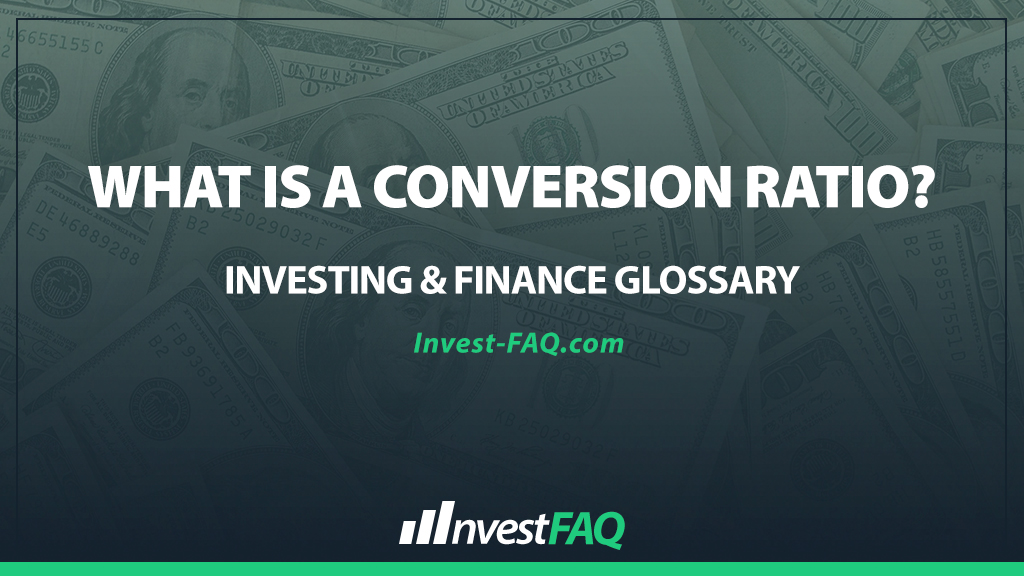
Conversion Ratio
Contents
A conversion ratio is a key financial metric that determines the number of shares an investor receives when converting a convertible security, such as convertible bonds or preferred shares, into common stock. This ratio is crucial for investors and companies alike, as it dictates the value investors get from conversion and the dilution effect on existing shareholders.
In business and finance, the conversion ratio is used to assess the attractiveness of convertible securities, guide investment decisions, and manage the capital structure of a company.
For investors, it helps evaluate the potential return on a convertible investment. For issuers, it influences the pricing of convertible securities, affecting how much capital can be raised without excessive dilution of ownership.
Example of a Conversion Ratio
Suppose “XYZ Corporation” issues convertible bonds with a face value of $1,000 each and a conversion ratio of 20. This means for every bond converted, the bondholder receives 20 shares of XYZ’s common stock. If XYZ’s current share price is $50, converting would give the bondholder shares worth $1,000 (20 shares x $50), equating the bond’s face value but providing equity participation potential.
In this scenario, the conversion ratio allows bondholders to calculate the number of shares they would receive upon conversion, providing a clear basis for comparison between holding the bond to maturity or converting to equity.
The choice to convert typically depends on the current and expected future value of the company’s shares. For XYZ Corporation, setting the conversion ratio at 20 ensures that the bonds are attractive to investors seeking both the security of fixed-income investments and the growth potential of equity, while managing the company’s dilution risk.
Types and Uses in Business Scenarios
Conversion ratios are utilized in several business scenarios, including:
Financing: Companies may issue convertible securities as a less dilutive financing option compared to issuing common stock.
Investor Relations: A favorable conversion ratio can make convertible securities more attractive to potential investors, offering a balanced risk-reward proposition.
Strategic Planning: Companies might use convertible securities to align interests with key stakeholders, such as employees or partners, by offering the potential for equity participation.
Capital Structure Management: Convertible securities can serve as a tool for managing a company’s debt-to-equity ratio, impacting its leverage and financial flexibility.
Significance for Investing & Finance
From an accounting perspective, the conversion ratio is significant for several reasons:
Valuation of Convertible Securities: The conversion ratio directly affects the valuation of convertible securities, influencing their pricing in the market.
Dilution Analysis: Companies must consider the potential dilution of existing shares upon conversion, impacting earnings per share (EPS) and shareholder equity.
Financial Reporting: The issuance and conversion of convertible securities require specific disclosures in financial statements, including the terms of conversion and the potential impact on the company’s capital structure.
In summary, the conversion ratio is a pivotal metric in the realm of convertible securities, offering insights into the potential benefits and risks for both investors and issuing companies.
It plays a critical role in financial analysis, investment decision-making, and strategic capital management, highlighting its importance in both business strategy and accounting practices.
FAQ
How is the conversion ratio of a convertible bond determined?
The conversion ratio is determined at the issuance of a convertible bond, based on the bond’s terms and conditions, which specify how many shares of common stock a bondholder can receive upon conversion.
Can the conversion ratio of a convertible security change over time?
Yes, the conversion ratio can change over time if the issuing company has provisions for adjustments in the event of certain corporate actions, such as stock splits or dividends, to protect the interests of convertible security holders.
What factors should investors consider when evaluating the conversion ratio of a convertible bond?
Investors should consider the conversion ratio in relation to the current share price, future growth prospects of the company, and the bond’s yield to determine the potential for profit upon conversion.
How does a high conversion ratio impact a company’s financials?
A high conversion ratio means more shares need to be issued upon conversion, which can lead to greater dilution of existing shareholders’ equity but may also reduce debt liabilities if bondholders opt for conversion.
